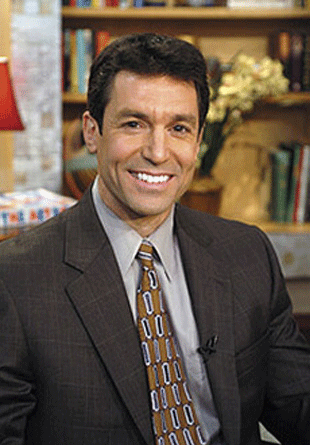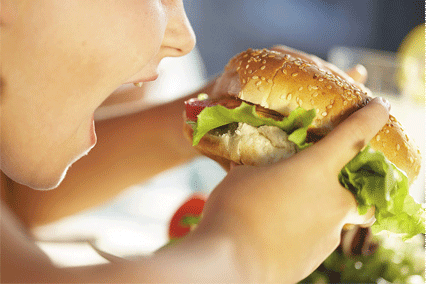
It’s an indisputable fact that adults and children are increasingly subject to the threat of obesity because we live in a flood of “obesigenic” -- obesity causing -- factors.
 WINNING, WHILE LOSING
WINNING, WHILE LOSING
The
Obesity and poor eating habits are the unfortunate byproducts of modern life.
By: Dr. David L. Katz*
Last week a report published internationally by the Associated Press weighed in on the topic of childhood obesity. The conclusion? Nutrition education in our schools has not improved children’s eating habits, nor controlled young people’s weight. It’s true, nothing we’ve done so far has curtailed the spread of epidemic childhood obesity and its dire consequences such as diabetes, but the report is as wrong as it is right.
It’s an indisputable fact that adults and children are increasingly subject to the threat of obesity because we live in a flood of “obesigenic” -- obesity causing -- factors. These factors -- frequently cited in scientific literature and public policy debates -- include seemingly inescapable aspects of modern life: TV, video games, labor-saving technology from leaf-blowers to PDAs and Blackberries, processed foods, fast foods, oversized portions, vending machines, suburban sprawl, deceptive food labels, food marketing practices, and financial incentives including agricultural subsidies, which encourage consumption of all the wrong foods.
I believe there are three basic reasons nutrition education might viewed as ineffective, but they are all fixable. First, the emphasis of nutrition education for children -- and adults -- has been on “what” we eat, when the knowledge urgently needed is on “how” [to] eat well. The “what” of healthy eating conducive to weight control is simple: Eat more fruits and vegetables. In a January, 2007 New York Times Magazine cover story, nutrition-writer Michael Pollan summarized nutritional guidance in 7 words: “Eat food. Mostly plants. Not too much.”
The trouble, however, with “what to eat” advice focused, quite appropriately, on fruits and vegetables, is that the food supply doesn’t correspond. Even if you do stock up on fresh fruits and vegetables, much of our food comes in bags, boxes, bottles, jars, and cans not peels. How to choose well among these prepared food options requires a “how to” skill set: How to read a nutrition facts panel; how to size up an ingredient list; how to see past banner ads and marketing hype to the nutritional truth; how to tell which of the dozens of choices in any food category from beans to breakfast cereal is worse, better or best for you.
Some of this work can and should be done outside of schools. A simple, single symbol could be placed on foods indicating their overall nutritional quality. Some countries and food companies already do this, while my lab, and others, are working to make it a reality in
(http://www.davidkatzmd.com/nutritiondetectives.aspx). I’ve provided similar guidance for adults in several of my books, and the FDA does a good job at: http://www.cfsan.fda.gov/~dms/foodlab.html.
The second problem reflects a semi-toxic mix of excessive political correctness and hypocrisy. We talk about “junk foods,” but nothing on a label indicates which foods are junk foods, while the official position of the American Dietetic Association offers a conflicting message: there is no such thing as a bad food. How comforting to know when our kids are eating junk, it isn’t bad junk!
To make matters worse, we permit marketing to children of the very foods we know contribute directly to obesity and diabetes. A nutrition education program in schools -- run on a shoe-strong budget -- says “eat this,” while the marketing might of Madison Avenue says: “eat that.” It’s an uneven contest. Solution? Our dietary guidelines should be much more explicit naming foods people wanting to be healthy should not eat (or rarely), while food marketing to children should be strictly regulated in accordance.
 And finally, the biggest problem of all: because obesity and poor eating habits are the unfortunate byproducts of modern life and its attendant conveniences, no single intervention will ever be enough.
And finally, the biggest problem of all: because obesity and poor eating habits are the unfortunate byproducts of modern life and its attendant conveniences, no single intervention will ever be enough.
We should think of our efforts as being directed toward containing a flood tide of obesigenic forces. Any single intervention such as nutrition education is just one sand bag in the levee we must build. A single sand bag can’t hold back a flood, but a levee -- built of many sand bags -- can. In the effort to contain and reverse the flood tide of obesity, the sand bags include nutrition education in schools. The effort also includes improvements in everything from neighborhood design to food labels, clinical counseling to food marketing, physical education to worksite wellness. We’ll see the waters recede after we’ve done enough heavy lifting, and built a strong levee.
In the interim, we shouldn’t be surprised or discouraged by the kind of results reported by the AP. We should, however, do what makes sense, and evaluate each intervention for modest effects on knowledge, attitudes, and skill-power. If we stay the course, better nutrition, weight control, and health improvements will surely follow in time.
David L. Katz, MD, MPH, FACPM, FACP; Director,